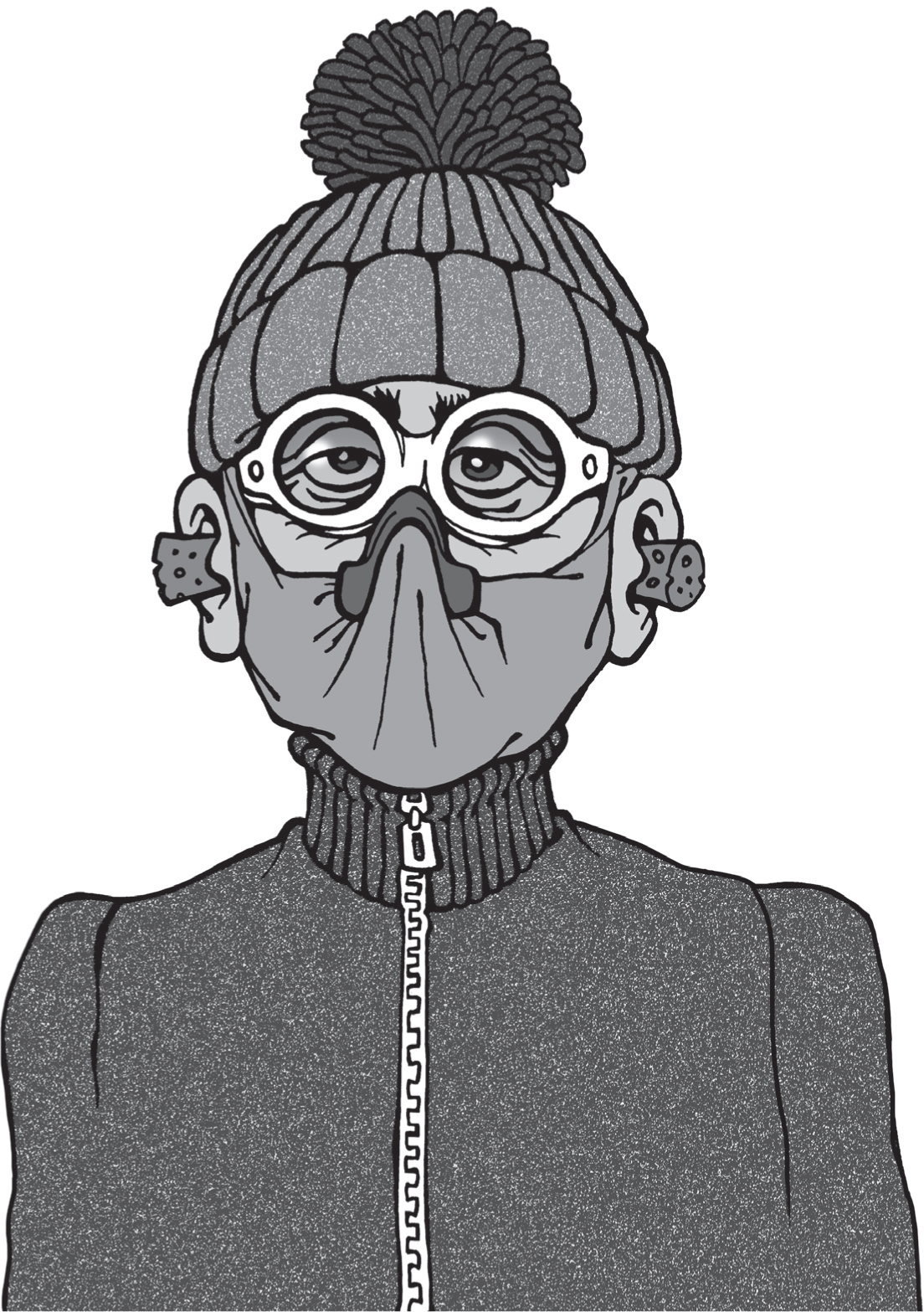Written and illustrated by Antsy McClain
The green, green dust of home
From pollen in spring to ragweed in autumn, allergies get us coming and going
By the time I was 15, I had climbed the tallest oak and maple trees within a 3-mile radius of my home.1 Many of my boyhood memories include those trees, napping under their shade, cradled in their gnarled limbs.2
When I first learned to play the guitar, I noticed that girls were more likely to come and listen to my butchered version of “Fire and Rain”3 if I was under a tree in a park somewhere. I love trees. I felt we were friends.
So, why have they turned on me?
These days, my childhood memories of sitting in the bough of a maple tree among spring foliage or frolicking in a field of April flowers can cause me to cough psychosomatically. It all started to change in my mid-40s. Before that, I didn’t know what pollen was.4
Tennessee’s plant life all start their pollinating around February and then take their turns assaulting me until November, leaving me precisely two months of Flonase-free breathing each year.
The instructions on the bottle of my allergy medicine are depressingly direct: “Avoid all outdoor activity.”
ALL outdoor activity? How is that possible? This time of year, my “outdoor activities” consist of only three things: getting the mail, running to the car to retrieve a forgotten cellphone and standing next to a closed window. And any of these can send me into a sneezing fit.
I just saw a movie where a couple kissed and reclined in slow motion, falling casually onto the soft, welcoming bed of daisies and crabgrass. I was astonished! No blankets? No pillows? No inhalers? Just them and their non-red, itch-free noses mere inches from the bare, naked grass where an entire world of microorganisms crawl unseen, waiting to infect.
I couldn’t take it. Who were these alien life forms rolling in the grass, impervious to the malicious microbes I’ve had to endure most of my adult life? It’s just one more reason why I distrust celebrities.
I was just in Aisle 7 of my local Walgreens, smiling weakly at remnants of my tribe, ambling around like hungover zombies. We were all trying to read the backs of Sudafed boxes, blinking away the itchiness, peering through the strongest reading glasses we could find on the spinning carousel across from the Odor-Eaters.
We all whistled through our noses, forming a small, traveling minstrel of sorts, attracting neighbor-hood dogs. They waited for us at the entrance, wagging their tails, expecting treats.5
Self portrait of the author, spring 2025, as he prepares to go outside to get the mail.
Artwork © 2025 by Antsy McClain. All Rights Reserved. Unhitched.com
For a lot of people, allergies are no laughing matter. They can be maddening, even life-altering. Emergency room visits, breathing treatments and prescription drugs are routine.
Some dear friends had to move from Tennessee to the dry, desert climate of Arizona to escape Tennessee’s allergens. The thought of leaving was so heartbreaking, they tried everything else first but ultimately had to change their surroundings. Once settled, they told me they missed their home and all their friends here but said, “It sure is nice to breathe again.”
Thankfully, my friends are in the minority, and most of us can find relief from over-the-counter and off-the-rack remedies at our neighborhood pharmacies.
I have a buddy, a scientist, who has a logical, if not somewhat gloomy, explanation for all of this. He thinks the Earth is out to get us from the time we are born until we are laid in our graves, when the Earth ultimately “wins.” Viruses, germs, spores, allergens, all of it — and more — he says are here to make humans as miserable as possible in the hopes, it seems, that we will leave and, once gone, never wish to return to this inhospitable climate ever again.
He sees humanity as uninvited guests to Mother Nature’s dinner party. We show up, empty her liquor cabinet and trash the place before wobbling out into the night, headlong into our extinction, which he assures me is imminent.
To which I laugh and reply, “Hold on there, Hoss! Let’s take a deep breath and relax.”
After I’m done coughing from my deep breath, we change the subject to football.
Footnotes that are generally more interesting and entertaining than the actual story
1 There were a lot of maple trees in my neighborhood. Maple trees are notably one of the sappiest trees but, ironically, the best for climbing. Their lowest limbs are reachable by most 15-year-olds, thereby giving climbers the perfect launching height to ascend into the higher limbs.
By late summer every year, my clothes were spotted with an organic camouflage made of tree sap — and the dirt the sap subsequently collected. My hands and arms were also stained by the sap. I would peel it off like snake skin, but it always left a stain that would last for days.
My mother tried to keep me from climbing in my newer clothes, but tree climbing is seldom premeditated. It’s a spontaneous act that usually happens while hiking or walking — like seeing a pretty girl, and you just have to talk to her. Certain trees are screaming to be climbed, no matter what you’re wearing. New jeans or not, church clothes or not, I was going up there.
2 The fact that I chose to spend so much of my time in nearby trees might indicate that I was a bit of a loner as a boy, content to be away from people. I wouldn’t necessarily disagree with you. Given the degree of cruelty on the grade school playground of my day, who could blame any of us for wanting to keep to ourselves?
Trees never bullied me, never called me names. Trees were a mighty means of support. With their help, I could see far beyond my little playground in my little town, far beyond the clumps of children who formed their alliances. Up in a tree, I could see the future.
3 James Taylor’s “Fire and Rain” (1970) was the most-played song in parks, under trees, surrounded by girls until the mid-’80s, when A-ha’s “Take On Me” and (depending on the park) Guns N’ Roses’ “Patience” took over. In 1990, Extreme’s “More Than Words” quickly surpassed all the aforementioned songs and reigned as the most performed song in parks, under trees, surrounded by girls, until 2005 when Plain White T’s’ “Hey There Delilah” took its place and remains uncontested.
4 One spring morning, I saw the layer of green dust on the hood of my stepfather’s car and asked him what it was.
“Bollen,” he said through swollen sinus passages. He seemed to have the driest of mouths, as if he had completely forgotten how to breathe properly.
“Bollen?” I repeated back to him.
“No. Bollen,” he said, realizing he could no longer say his P’s. “It gums from the treez.”
He sniffed hard to try and open things up, but his nose just made a tight squealing noise like a sick, tired penny whistle. That sound became the soundtrack to our lives from March to May every year.
5 Comedian Nate Bargatze, whose Middle Tennessee home life has become a storytelling cornerstone, talks about his Tennessee allergy-suffering father being addicted to Afrin. “He’s used it for 45 years,” he says. “The back of the box says ‘no more than three days.’” It gets a big laugh. And any humorist can tell you, jokes only get big laughs if the audience relates. So, when an entire stadium full of people laugh at being addicted to allergy medicine, it must be a thing. And it is.
I Googled “allergy medicine addiction” and was shocked at how many sites popped up. I was also interested to learn that the biggest side effect of allergy medicine overuse is, drum roll, please … congestion, which, ironically, is why allergy sufferers take that stuff in the first place. So it’s no wonder we get addicted to something that gives us the symptom for which we take the drug. Just chew on that. With your mouth open. Because you’re probably congested.


